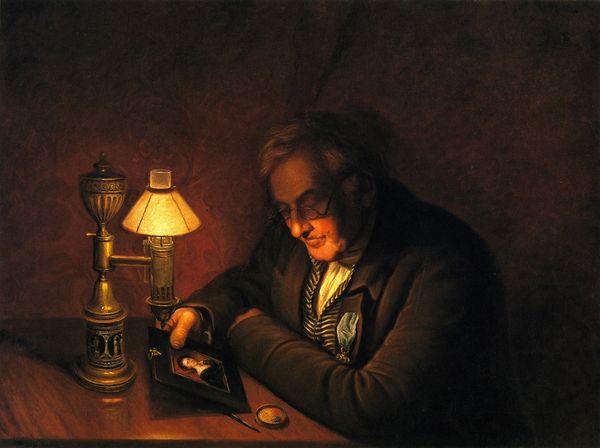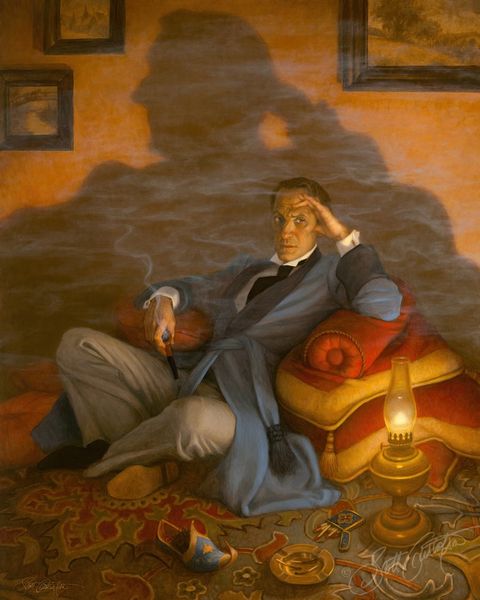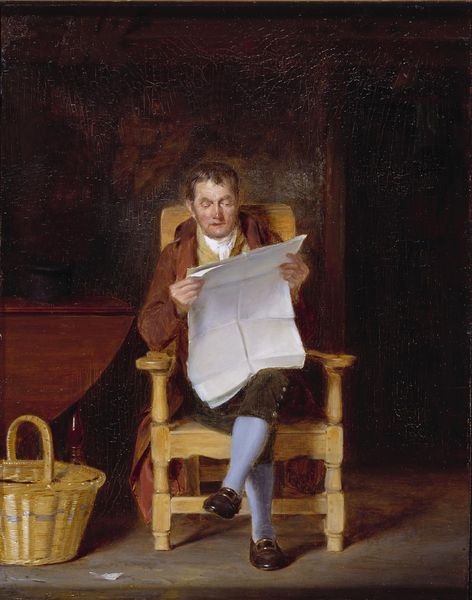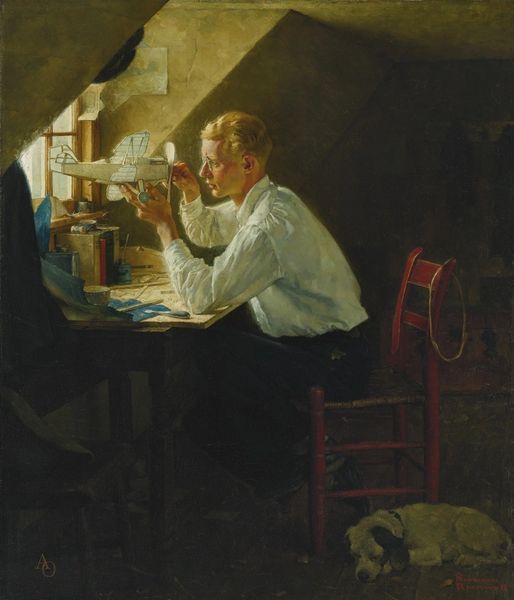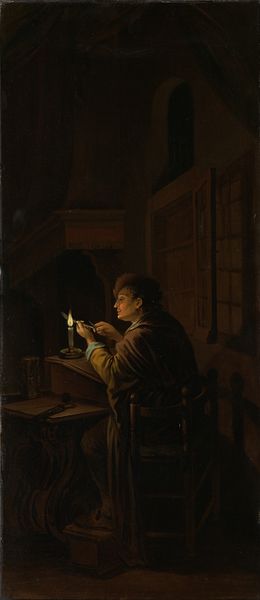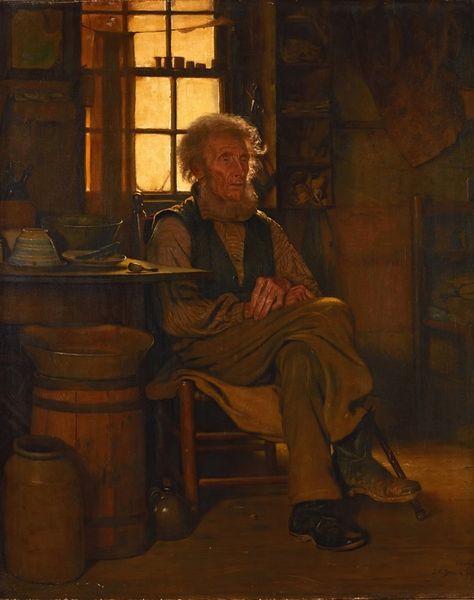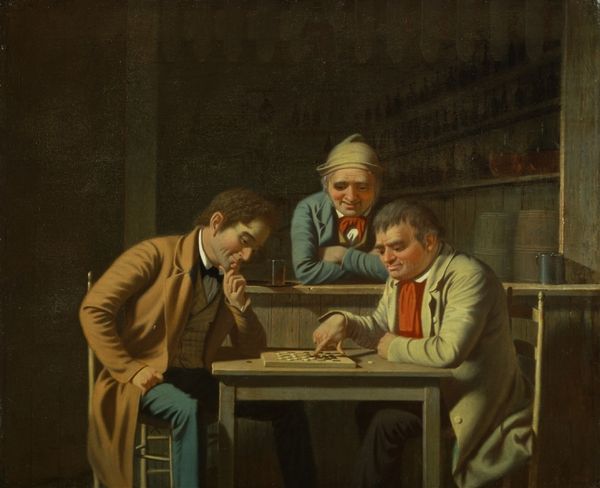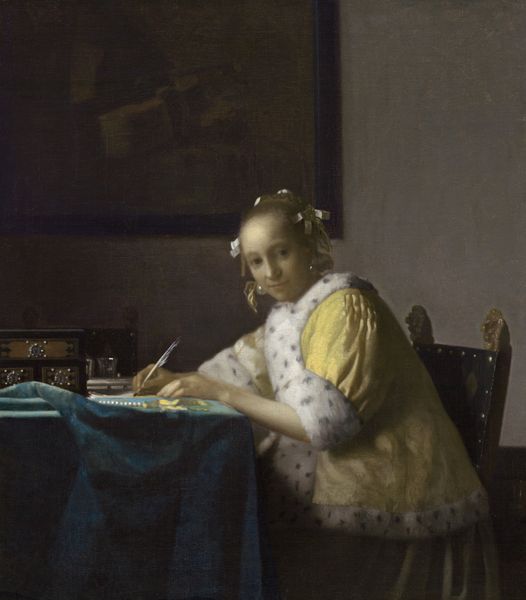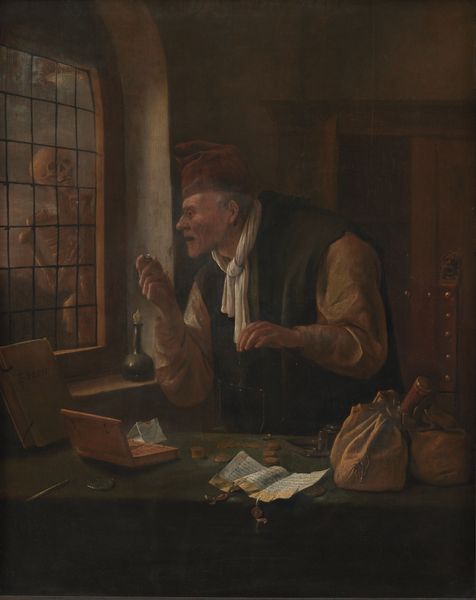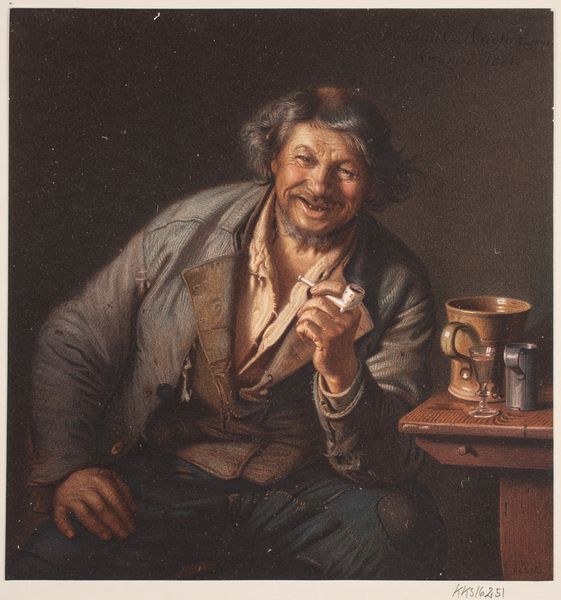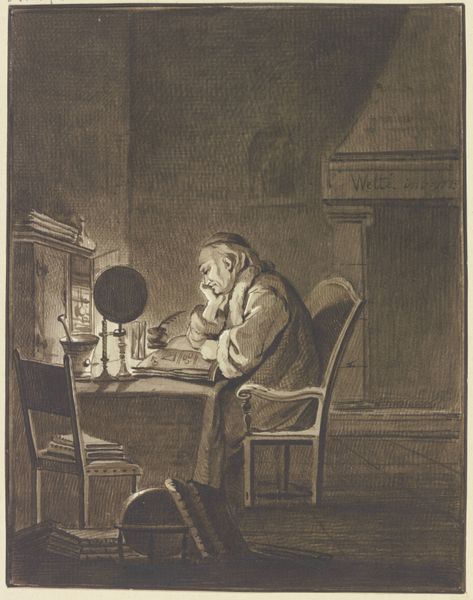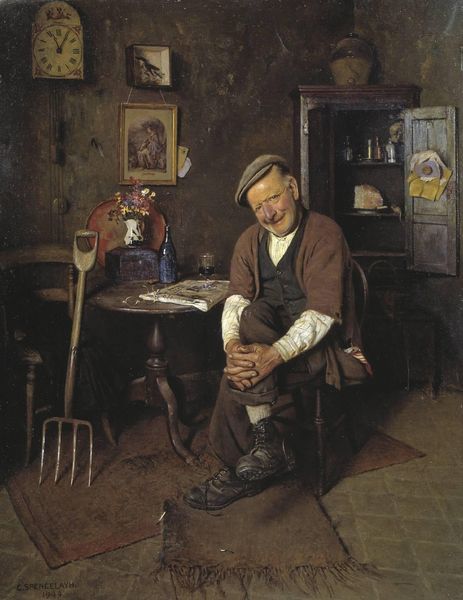
painting, oil-paint
#
portrait
#
painting
#
oil-paint
#
romanticism
#
genre-painting
#
academic-art
Copyright: Public domain
Curator: Let’s turn our attention to Rembrandt Peale’s painting, “Man Reading by Candlelight.” Editor: It's striking. The overwhelming darkness makes the single source of light so prominent. The figure's face and the letter he holds seem to glow from within, as though illuminated by knowledge itself. It reminds me of the intense focus and isolated labor required to create. Curator: Absolutely. Peale uses the Romantic style to not only capture a likeness but to delve into the man’s psychological space. The figure’s pose, his spectacles, even the drapery in the background are carefully constructed to convey a sense of intimacy, perhaps vulnerability. It almost seems staged. Editor: And what about the very act of reading by candlelight? Think about the cost of materials for that light source and the expense involved for reading materials at this time. The paper is a crafted item, as is the ink and the printing or handwriting itself, so who is the letter *from*? Curator: I hadn't considered that aspect, though, reading the content becomes a form of labor and a privileged one. Perhaps a critical analysis of power structures and gendered hierarchies within 19th century academic art could uncover the politics of this scene. Whose voices and experiences were often left in the dark? How does that historical bias affect our reading of this scene? Editor: I think understanding these paintings, no matter the historical moment, must be tied to tangible components: canvas preparation, paint recipes, the sourcing of pigments. The availability of even candlelight speaks volumes. Who makes and controls those resources and what implications might it have in relation to the artist? Curator: You are right. By examining the art through these lenses, we're not only appreciating the work on display, but prompting essential dialogues about representation and socio-economic contexts. Editor: Indeed, because without this approach, we only receive half the story—failing to examine the hidden networks sustaining artistic creation.
Comments
No comments
Be the first to comment and join the conversation on the ultimate creative platform.
